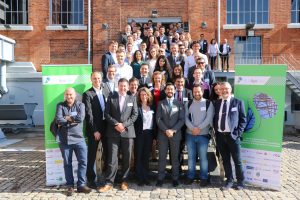Second EU-SysFlex blog is here
29.03.2019News Developing the needed flexibility will require economic incentives provided by well-functioning electricity markets. The objective is to reward the right flavour of flexibility at the right time and on the right place.
Developing the needed flexibility will require economic incentives provided by well-functioning electricity markets. The objective is to reward the right flavour of flexibility at the right time and on the right place.
The 2030 power system will be very different and complex when integrating 50% of RES. The current European power generation accounts for around 30 % of renewable energy sources (RES) which are largely based on hydroelectricity and distributed, heterogeneously across Europe. Our common target is to increase the share of RES to at least 50% by 2030, mostly thanks to variable renewables such as wind and solar, by using the best resources across the territory. This means that the system will need to operate with a large share of variable generation output largely distributed at lower voltage levels and with . Meeting the target requires a significant transition from today’s system with its well understood and secure operational processes to a system with a much higher degree of complexity.
Flexibilities by current and new players will be key to the transition. Flexibility and system services will play a key role in ensuring a reliable and secure system capable of balancing demand and generation constantly on a second-by-second basis and handling a wide range of events. The issues are technical – impacts on the system operation and stability. But developing the needed flexibility will also require economic incentives provided by well-functioning electricity markets in order to reward the right flavour of flexibility at the right time and on the right place. Flexibilities can be found across borders and on all system levels from large-scale conventional generation capabilities to distributed storages in water heaters and electric vehicles back home. The approach combines system operation, using information and communication technologies and managing energy markets.
EU-SysFlex uses a multidimensional approach including technical characterization of system needs to integrate more than 50% of renewables, the identification of the necessary enhancements of market design and regulation, as well as demonstrating a wide range of innovative approaches and solutions. The needs will be answered and a roadmap for flexibility will be provided to support the swift implementation of the solutions. The solutions tested on an industrial scale include innovative technologies based on demand response, batteries, aggregation, TSO-DSO interface coordination, as well as data security and exchange. The impact of the project matches the European ambitions for low-carbon electricity.
EU-SysFlex will significantly contribute to keeping Europe at the forefront of power system transformation to meet world-leading RES objectives, to laying the foundations for an electricity market that values all flexibility sources and fosters an efficient use of resources, to enabling TSOs and DSOs transformation to facilitate the use of flexibility resources spread across all levels of the system, to boosting European industrial innovation capacity and to placing low carbon electricity at the heart of European economy.
Written by: Marie-Ann Evans, EDF
Disclaimer: blog entries reflect individual views of the author(s) that may not reflect official positions or communication of the project / project consortium.
For further information please follow us on www.eusysflex.com, LinkedIn, Twitter and Facebook.